What is the Poisonous plants for french bulldogs?
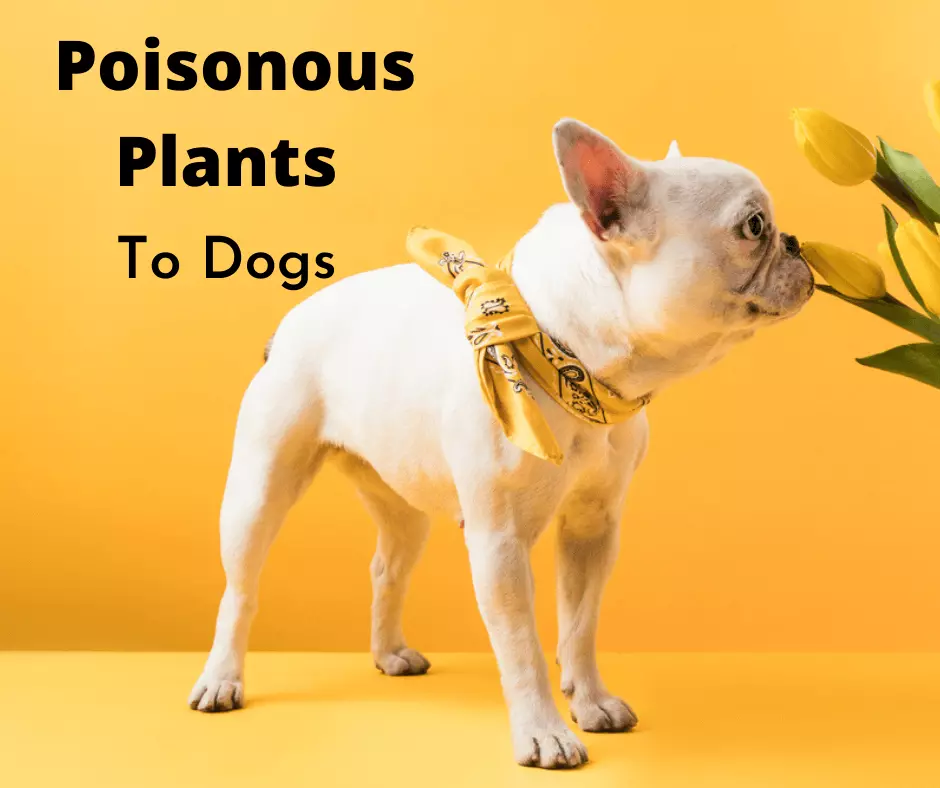
When new Frenchie parents welcome a puppy from our litters, ensuring the safety and health of these bundles of joy becomes a top priority. Beyond providing a secure environment, nourishing meals, and ample hydration, safeguarding these furry companions from common household hazards is essential.
The Hidden Dangers Within Homes
Surprisingly, your home environment can harbor threats to your Frenchie’s well-being, and one of the most overlooked dangers includes household plants. Studies indicate that plants account for frequent cases of animal poisoning, with dogs, including French Bulldogs, being the most commonly affected. While vet assistance can mitigate harm if your Frenchie interacts with harmful plants, preventive measures within homes and other environments remain crucial.
Common Harmful Plants :
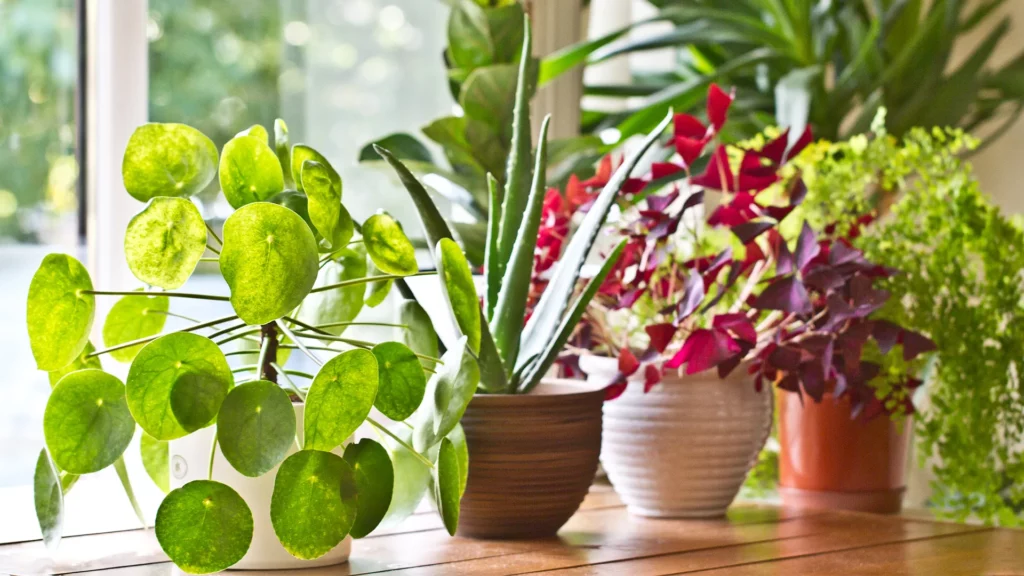
The safety of French Bulldogs is paramount, especially concerning their exposure to toxic foods and plants. To ensure their well-being, we’ve gathered vital information on perilous plants, urging Frenchie owners to prevent any access to these potentially harmful flora. If your Frenchie ingests a questionable plant, swift veterinary contact is crucial for guidance and support.
Ornamental Threats
Sago Palms, commonly seen in warmer regions, can pose severe threats to dogs. Their allure often tempts dogs to chew, resulting in symptoms like vomiting, diarrhea, and liver failure.
The Elusive Amaryllis
Popular among gardeners, Amaryllis bulbs from tropical regions can cause symptoms such as excessive drooling and lethargy if ingested by your Frenchie.
Toxic English Ivy
Adorning homes, English Ivy leaves and berries cause vomiting, diarrhea, abdominal pain, and contact rashes in dogs.
Troublesome Tulips
Beloved for their beauty, tulips can adversely affect a dog’s GI and central nervous systems, leading to convulsions and, in severe cases, unconsciousness or fatality.
Deceptive Oleander
Despite its attractiveness, Oleander’s toxicity causes gastrointestinal disturbances and heart rhythm abnormalities in dogs.
Hazards from Kitchen Gardens
Plants like tomatoes and Aloe Vera trigger adverse reactions in French Bulldogs, affecting their gastrointestinal systems and nervous systems, respectively.
Marijuana Concerns
Cannabis poses risks to pets, leading to lethargy, anxiety, or urinary incontinence, with higher doses causing seizures or fatalities.
Allium Species
Garlic and onions from the Allium family adversely affect a dog’s red blood cells, leading to weakness, irregular breathing, and red-colored urine.
Dangers Beyond Gardens
Open spaces harbor risks; castor beans, unidentified mushrooms, citrus plants, and corn cobs pose threats, necessitating caution.
Mistletoe, Holly, and Wolfsbane
Despite their festive associations, mistletoe, holly, and wolfsbane can cause severe stomach issues, heart disorders, and suffocation risks, respectively.
Fig Trees and Beyond
Fig trees may cause skin irritation, itching, breathing difficulties, and swallowing issues for dogs.
Additionally, various other plants are toxic to dogs, including Agave, Rhododendrons, Ivy, Elephant ear, Monstera deliciosa, among others.
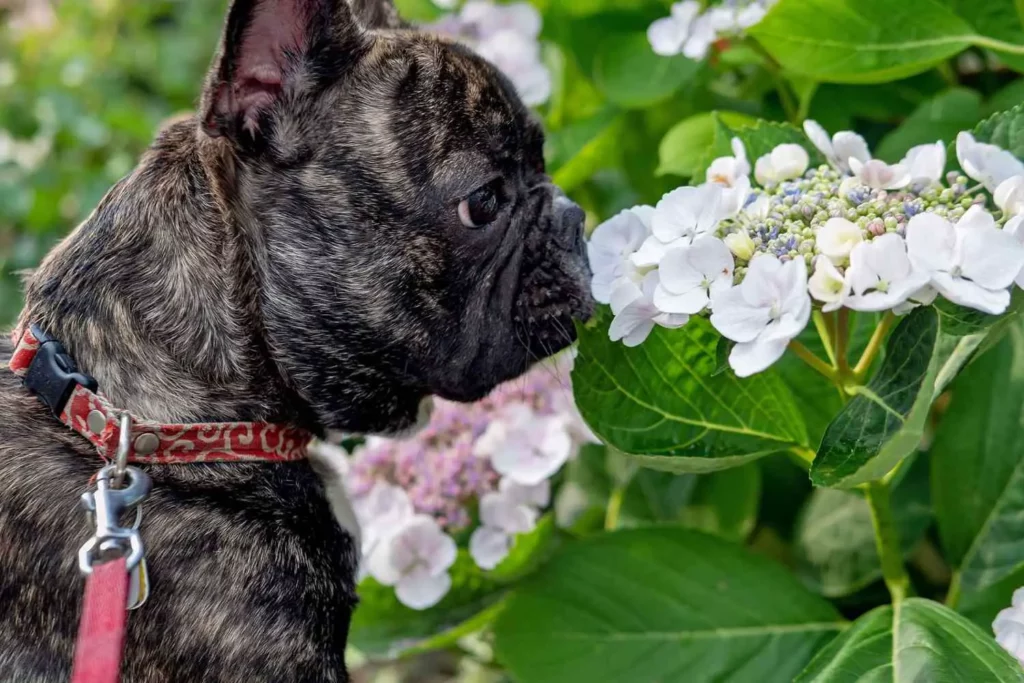
This comprehensive list is not exhaustive. If your dog displays allergic reactions or symptoms after potentially consuming a plant, immediate veterinary assistance is necessary. It’s prudent to have a reference book on poisonous plants or handy fridge magnets for quick emergencies, aiding in protecting your Frenchie.
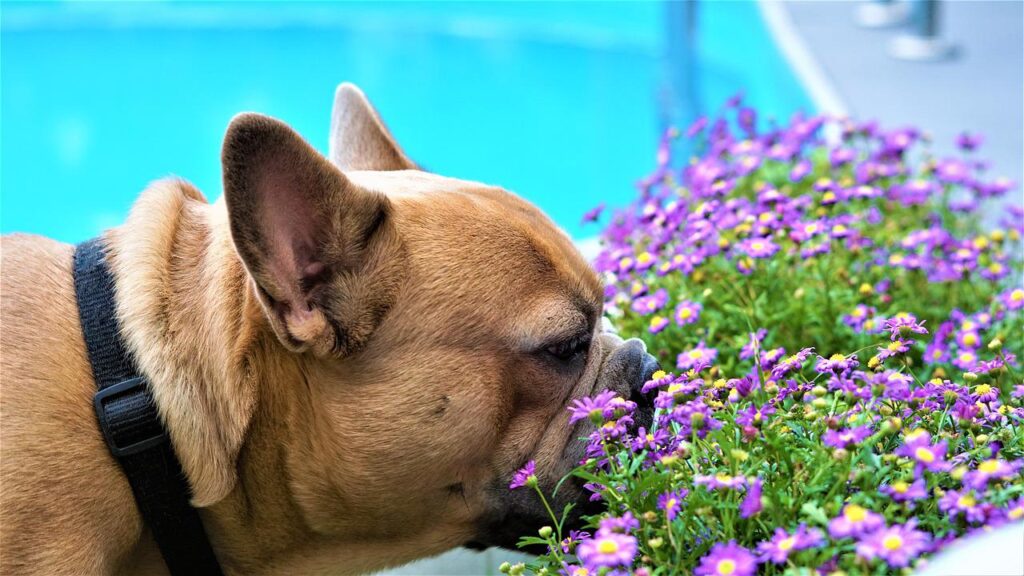
French Bulldogs should avoid specific plants under all circumstances. The following plants stand out as particularly hazardous and should be inaccessible:
1. Castor bean or castor oil plant (Ricinus communis)
2. Cyclamen (Cylamen spp.)
3. Dumbcane (Dieffenbachia)
4. Hemlock (Conium maculatum)
5. English Ivy, including leaves and berries (Hedera helix)
6. Mistletoe (Viscum album)
7. Oleander (Nerium oleander)
8. Thorn apple or jimsonweed (Datura stramonium)
9. Yew (Taxus spp.)
10. Any unidentified mushrooms
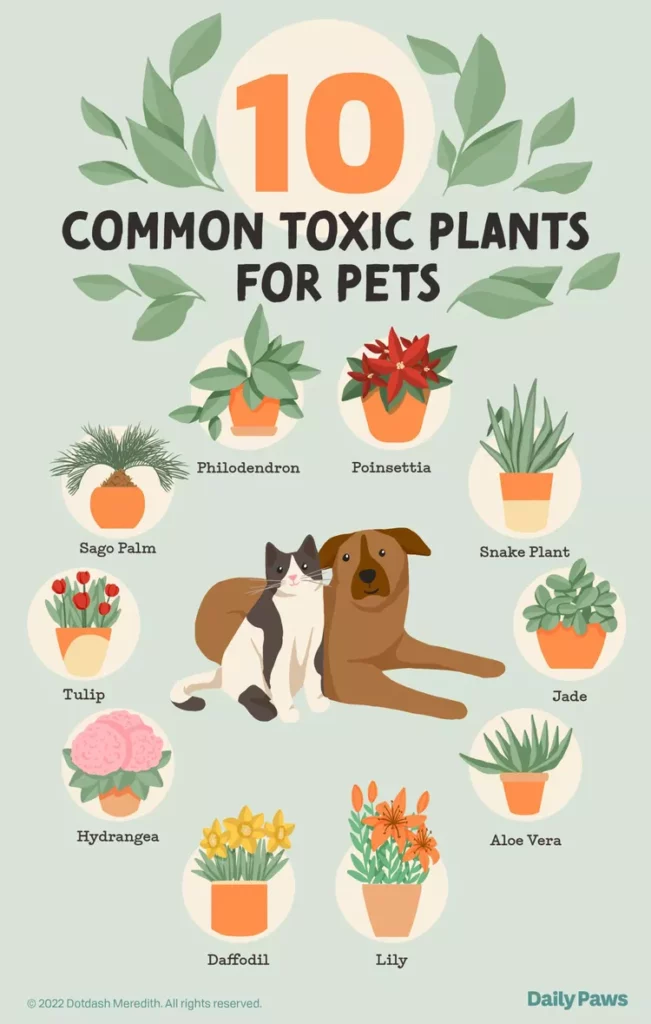
Avoid these plants due to various reasons, refraining from planting them near homes or indoors as potted plants or cut flowers. Additionally, certain tougher-leafed or woody plants should be avoided around the house:
1. Azalea
2. Box
3. Chinaberry tree
4. Horsechestnut
5. Laburnum
6. Oleander
7. Privet
8. Sago Palm
9. Rhododendron
10. Wisteria
Why Are Hydrangeas Toxic to Dogs?
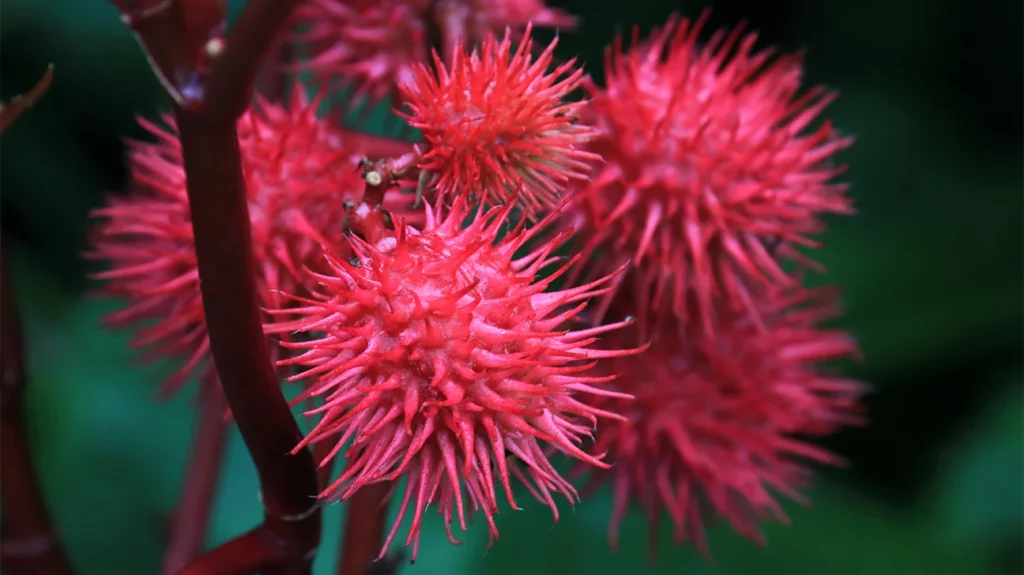
All components of hydrangeas, encompassing buds, flowers, leaves, and stems, are harmful to dogs, leaving no part of this plant safe for chewing. But what exactly renders these exquisite shrubs toxic to our canine companions?
Dr. Renee Schmid, DVM, DABVT, DABT, and Senior Veterinarian Toxicologist at the Pet Poison Helpline, explains, “Hydrangeas contain cyanogenic glycosides akin to those found in apple seeds, peach, apricot, plum, and cherry pits.”
While the impulse might be to swiftly remove hydrangeas or anything resembling them, there’s a reassuring aspect that might alleviate concerns and prompt a second thought.
“Although hydrangeas contain cyanogenic glycosides harmful to animals, the quantity of hydrangea plant material necessary for cyanide poisoning in a dog is substantial, resulting in poisoning being a rare occurrence,” Schmid notes.
To safeguard your hydrangeas or introduce them to your garden, consider situating them in the front yard away from your pets or employing a gate to separate them from your furry friend.
Detecting Hydrangea Poisoning Symptoms in French bulldogs :
As plants persistently secure spots on the ASPCA’s top 10 pet toxins roster, understanding the indicators of poisoning becomes crucial if your dog has encountered hydrangeas.
Regarding hydrangea poisoning, Schmid highlights that the predominant symptoms typically revolve around gastrointestinal (GI) irritation.
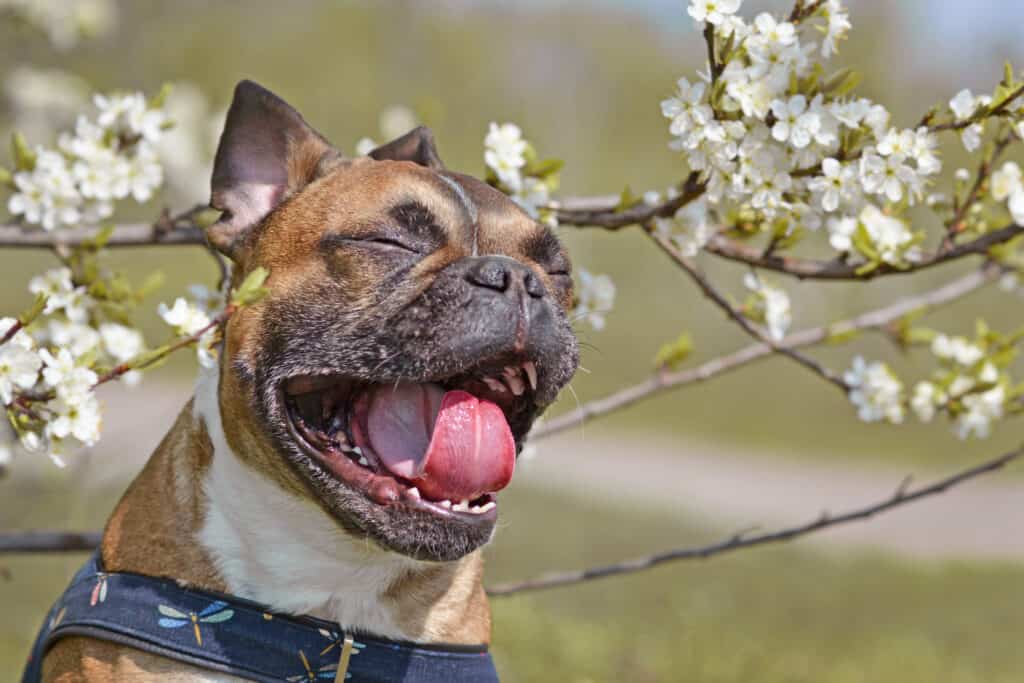
“The most frequent signs involve vomiting, lethargy, and diarrhea,” she points out. “In the event of cyanide poisoning, expect to observe hypotension, brick-red gum discoloration, irregular heart rhythms, a hint of almond-scented breath, hyperventilation, breathing difficulties, reduced oxygen levels, bluish discoloration, lack of coordination, and tremors or seizures.”
What to Do If Your Frenchie Ingests a Toxic Plant?
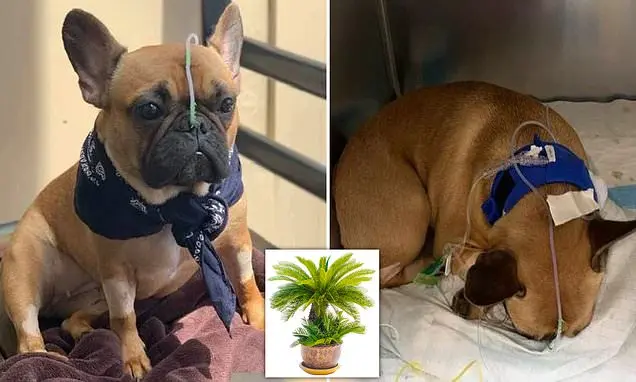
- Contact your vet immediately for accurate guidance.
- Try to identify the plant by gathering a sample, taking a photo, or preserving the dog’s vomit in a plastic bag.
- Share as much information as possible when contacting the vet or helpline, including:
- Suspected plant and the time of ingestion.
- Your dog’s weight.
- Any visible symptoms exhibited by your dog.
Never induce vomiting unless advised by the vet. Specific plant poisons require tailored treatments, and inducing vomiting can worsen certain cases.
Contrary to the belief that dogs instinctively avoid harmful plants, they cannot discern between safe and unsafe foliage. Therefore, it’s vital to proactively safeguard your environment.
Protecting Our Frenchie
The highlighted list of hazardous plants offers insights into potential dangers, but it isn’t exhaustive. Securing a Frenchie’s safety requires multifaceted approaches, including training, vigilant care, and restricting access to toxic plants and substances. Prompt vet consultation in case of plant poisoning is critical for effective intervention and care.




